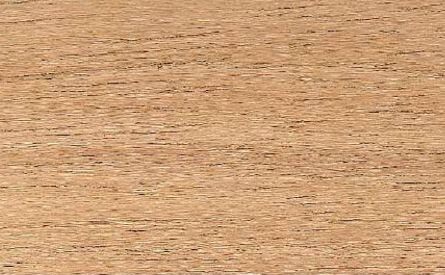SAN JUAN
Yemeri / Vochysia guatemalensis

Local Names
Distribution & Tree
Wood Appearance
When freshly cut, the heartwood is red but turns to a uniform pale golden-brown or pinkish-brown as the wood dries in the open air. It has a moderate to high luster and a coarse grain that varies from slightly to highly interlocked. It often has well defined streaks sometimes with parallel dark vertical bands. The wood has been suggested as a lower-cost and more environmentally-friendly substitute for threatened Spanish cedar (Cedrela odorata). In Peru, it’s referred to as cedrillo due to similarities. It has a light to medium density, medium hardness and quite strong with good dimensional stability.
Processing Properties
Strength & Durability
Wood Uses
Ecological & Social Importance
| Reference Species | ||||
| Technical Characteristics | San Juan | White Oak | Black Maple | |
| Density | kg/m3 | 550 | 750 | 640 |
| Janka Hardness | kgf | 605 | 612 | 535 |
| Bending Stiffness (Modulus of Elasticity) | GPa | 12.0 | 12.2 | 11.2 |
| Bending Strength (Modulus of Rupture) | MPa | 74.0 | 102.3 | 91.7 |
| Crushing Strength | MPa | 43.0 | 50.8 | 46.1 |
| Shrinkage, Radial | % | 1.6% | 5.6% | 4.8% |
| Shrinkage, Tangential | % | 4.4% | 10.5% | 9.3% |
| Shrinkage, Volumetric | % | 9.0% | 16.3% | 14.0% |
| T/R Ratio | 2.8 | 1.9 | 1.9 | |
| Values determined at 12% humidity | ||||
|---|---|---|---|---|
DENSITY
JANKA HARDNESS
BENDING STIFFNESS
BENDING STRENGTH
CRUSHING STRENGTH
SHRINKAGE
Values are for reference only and cannot be guaranteed. Wood is a natural material and physical and mechanical properties may vary depending on age, genetics, and other factors. We encourage customers to consult the references provided in the bibliography. For further explanations of wood’s key technical characteristics, an excellent resource is the Wood Database with articles on Density (average dried weight); Janka hardness; Elastic Modulus; Rupture Modulus; Crushing Strength; Radial, Tangential and Volumetric Shrinkage.






